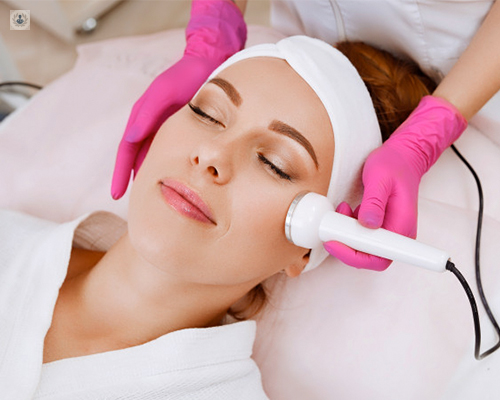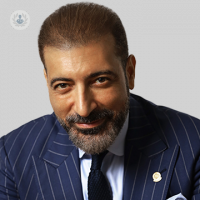Targeted ultrasound
Dr Sherif El Wakil - Aesthetic medicine
Created on: 11-13-2012
Updated on: 01-18-2024
Edited by: Conor Lynch
What is targeted ultrasound treatment?
Targeted ultrasound treatment, also known as focused ultrasound, is an auto-regenerative technique used to achieve skin tightening and overall rejuvenation. Although it can be used for body treatments, it is specifically used as a treatment in aesthetic medicine or dermatology to improve aspects of the face, such as lifting the skin, and improving tone and hydration.
Thanks to this non-invasive technique, ultrasound pulses can be applied with the use of technology to stretch the facial muscles and eliminate sagging without the need for surgery.

The benefits of focused ultrasound are that they only affect a precise and targeted area of the skin without causing any effect on the rest of the body. The final result is quite close to that achieved with a traditional surgical facelift.
This novel technique can be slightly painful but does not leave any scars. It normally only causes a little redness in the skin because of the ultrasonic shots in the face and the neck.
What does it consist of?
The physician will clean the areas and then apply a gel to your skin. Then, focused ultrasounds are sent through a device to different layers of the skin in short pulses.
The ultrasound waves are transformed into heat, between 70 and 80 degrees, which causes the dilation of hair follicles and sweat glands, encourages the production of collagen and increases blood flow. A typical session lasts approximately 45 to 90 minutes, depending on the area.
What can targeted ultrasound treat?
This treatment can serve as a therapeutic treatment to relieve pain but is more popularly used in aesthetic medicine and dermatology to rejuvenate the appearance of the skin. Focused ultrasound can help treat:
- Cellulitis
- Varicose veins
- Localised fat accumulations
- Acne
- Oedema
- Scars
- Wrinkles
- Sagging skin
- Stretch marks
- Localised circulatory disorders
What does targeted ultrasound recovery involve?
You may experience slight redness and swelling in the area that was treated, although it will subside relatively quickly. If the treatment has not been carried out correctly, there is a risk of thyroid or neurological injuries, so it is important to go to specialised centres and professionals when undergoing this type of treatment. Pregnant or breastfeeding women, patients with hernias, pacemakers or skin lesions should not undergo this treatment.
